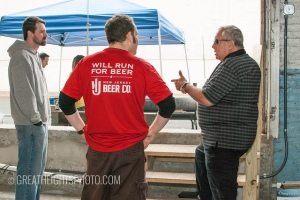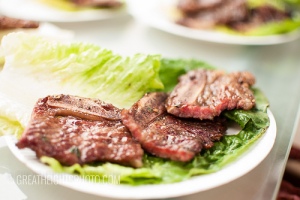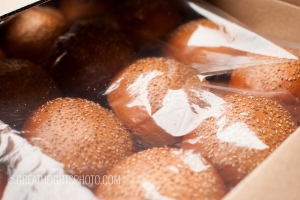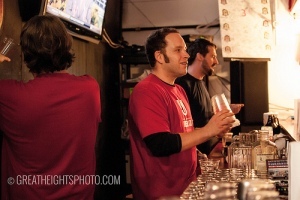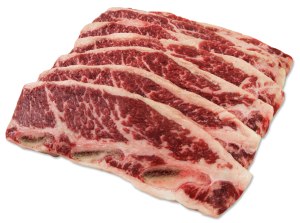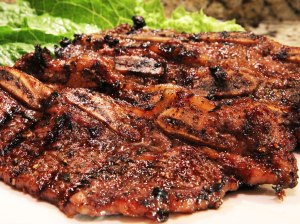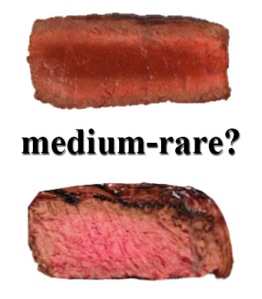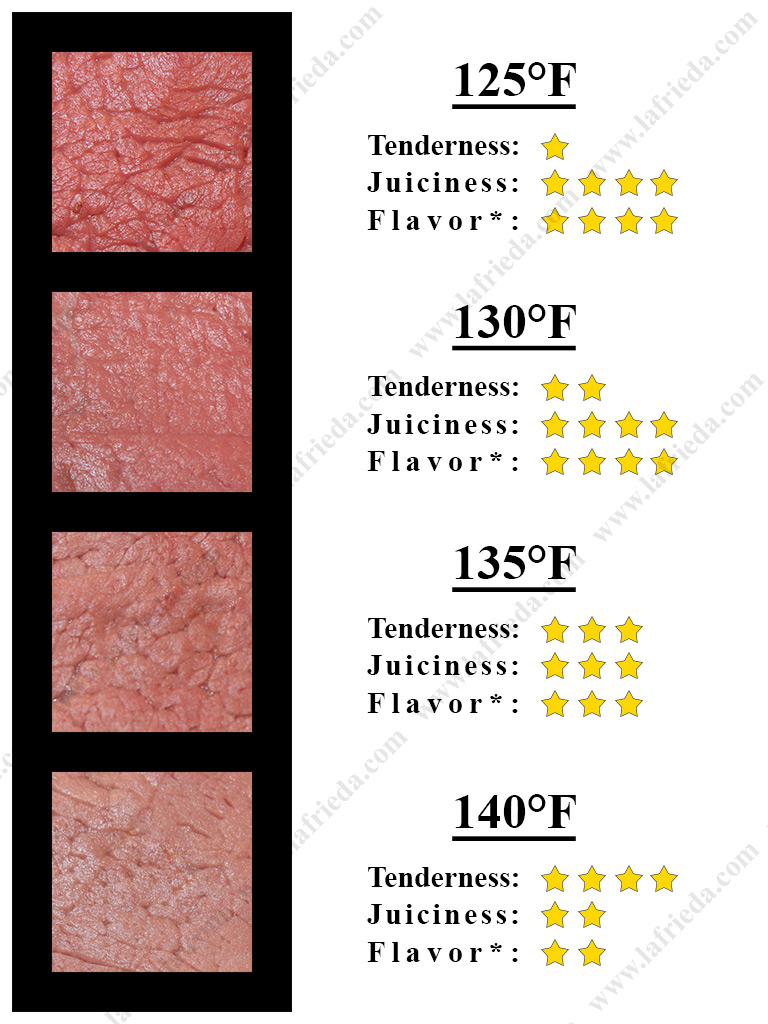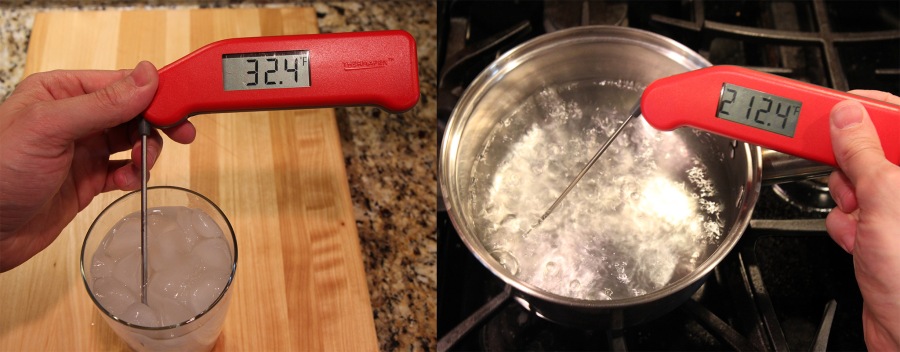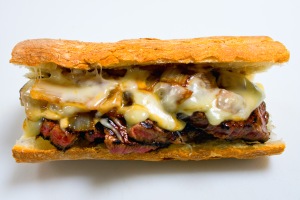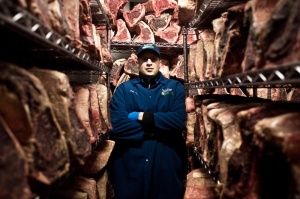Cooking a great steak can be tricky. High heat is needed to develop a crust and beautiful flavors (via The Maillard reaction). At the same time, the steak needs to be cooked as evenly as possible without overcooking, something that is usually achieved with slow, low temperature cooking. Successfully marrying both of these somewhat opposing requirements is the key to making a great steak.
 Inevitably, the sides of a steak are going cook more than the center. In an oven, or closed grill, heat enters the steak through its entire surface (shown right). At the center, heat enters from the top and bottom. However, around the edge of the steak, heat not only enters from the top and bottom, but also from the sides. The result is that the sides take on more heat and cook more than the center.
Inevitably, the sides of a steak are going cook more than the center. In an oven, or closed grill, heat enters the steak through its entire surface (shown right). At the center, heat enters from the top and bottom. However, around the edge of the steak, heat not only enters from the top and bottom, but also from the sides. The result is that the sides take on more heat and cook more than the center.
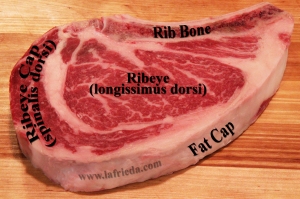 Fortunately, some cuts have natural defenses against overcooked edges. The steak with the best fortifications is the Bone-In Rib Steak (pictured right). The ribeye is protected on all sides from overcooking. The rib bone, fat cap, and ribeye cap all do a fantastic job of insulating the ribeye from the heat coming in through the sides. This makes it much easier to get even cooking throughout the entire ribeye. The ribeye cap will cook a bit more than the ribeye itself. However, the cap is very fatty and benefits from the extra cooking. In fact, for many the cap is the best part of the steak.
Fortunately, some cuts have natural defenses against overcooked edges. The steak with the best fortifications is the Bone-In Rib Steak (pictured right). The ribeye is protected on all sides from overcooking. The rib bone, fat cap, and ribeye cap all do a fantastic job of insulating the ribeye from the heat coming in through the sides. This makes it much easier to get even cooking throughout the entire ribeye. The ribeye cap will cook a bit more than the ribeye itself. However, the cap is very fatty and benefits from the extra cooking. In fact, for many the cap is the best part of the steak.
Not only is the Bone-In Rib Steak easier to cook, but it’s also the cut with the most amount of fat. As we always say “Fat is flavor.” For these reasons, we prefer to cook rib steaks over other steaks. Of course, any bone-in steak with a good fat cap will also give you great results. For other cuts, the cooking may be more uneven, but there are some techniques to help minimize this. More on this in future posts.
Find the Bone-In Rib Steak in our online store: http://www.lafrieda.com/USDA_Prime_Black_Angus_Bone_In_Rib_Steaks_p/bfspbrs.htm

